Yuksinsa Shrine (육신사)
15.5 Km 35480 2024-02-15
64 Yuksinsa-gil, Habin-myeon, Dalseong-gun, Daegu
Yuksinsa Shrine is a revered site dedicated to honoring the Sayuksin. Established during the Joseon dynasty, it stands well-preserved to this day. "Sayuksin" translates to "six dead ministers," referencing the six loyal subjects who, in 1453, attempted to restore King Danjong of the Joseon dynasty but were ultimately captured and executed. The shrine's entrance, marked by the Chungjeolmun Gate, is flanked by long rows of crape myrtle trees. These trees create a stunning visual spectacle when their red flowers are in bloom.
Nokdongseowon Confucian Academy (녹동서원)
15.5 Km 7699 2024-02-06
218 Urok-gil, Gachang-myeon, Dalseong-gun, Daegu
+82-53-659-4490
Nokdongseowon Confucian Academy was built in 1789 in honor of General Kim Chung-seon (1571-1642), who contributed greatly to Korea's defense during the Imjin War (1592-1598). The academy was shut down in 1868, and reinstated in 1885. Then, in 1971, it was moved to its current location. Today, General Kim's tablet is enshrined in this hall, where a memorial service is held every March. Nearby attractions on the grounds of Nokdongseowon include Nokdongsa Temple, Sunguidang Shrine, Hyangyangmun Gate and memorial stones.
Dalseong Korea-Japan Friendship Center (달성 한일우호관)
15.6 Km 13094 2022-12-29
206, Urok-gil, Dalseong-gun, Daegu
+82-53-659-4490
The Dalseong Korea-Japan Friendship Center opened in 2012 to highlight the philanthropy of General Kim Chung-seon (Japanese name Sayaka, 1571-1642) and promote friendship between Korea and Japan. Kim Chung-seon was a Japanese general who defected to Korea during the Imjin War. Shortly after arriving on Korean soil as a commander of a Japanese army, Kim, together with his soldiers, defected to Korea, a choice that has been traditionally attributed to his respect for Korean culture. He transferred the technology of manufacturing rifles to the Korean army and contributed greatly in battles in Gyeongju and Ulsan.
A great number of tourists visit the center to learn about history, including students and their parents, as well as numerous Japanese tourists who visit to commemorate the spirit of General Kim. The center features exhibition rooms, a 3D theater, a tea ceremony room, relics, manifestations of traditional games in Korea and Japan, documents from Wakayama prefecture in Japan, and a site for experiencing archery, all of which can be utilized free of charge.
Blue Moon Restaurant (블루문)
16.9 Km 7458 2020-04-30
685, Pagye-ro, Dong-gu, Daegu
+82-53-981-8088
Located at the foot of Palgongsan Mountain, Blue Moon is a great place to enjoy authentic steaks and fusion dishes. Take a stroll in the nearby park and watch the water fountain next to the walking trail. The restaurant has four floors, each with a different atmosphere to suit any occasion.
Daegu Bangjja Brassware Museum (대구 방짜유기박물관)
17.1 Km 14430 2019-03-19
29, Dojang-gil, Dong-gu, Daegu
+82-53-606-6171~4
Bangjja Brassware Museum is the first original museum of its kind in Korea. Unknown to many, Bangjja Brassware possesses a host of beneficial attributes and is used both for storing food and for growing plants. One of its primary functions is that of cultivating nutritive elements.
The Bangjja Brassware Museum in Daegu has numerous brassware products on hand that were generously donated by Lee Bong-Ju. His collection was subsequently appointed intangible cultural asset number seventy-seven by the Korean government.
The museum’s layout is rather intricate. Both the basement floor and second ground floor consist of three exhibit halls, a data research hall, a cultural experience hall, a video education hall, an outdoor stage, and several planning exhibit halls. In the Brassware Cultural Hall, a display boasting Korea’s history regarding various kinds of brassware, together with other relevant information is on hand for visitors. In the nearby Donation Hall, a National Intangible Cultural Heritage, Lee Bong Ju’s luxury brassware collection, is on display. In the Reappearance Hall there are makeshift displays illustrating where brassware was first produced and where it was traded.
Gunbulo Bisl Resort Tourism Farm (비슬리조트관광농원 군불로)
17.8 Km 8195 2021-03-12
51, Naksan 1-gil, Cheongdo-gun, Gyeongsangbuk-do
+82-54-372-0900
Gunbulo Bisl Resort Tourism Farm is located at the foot of Biseulsan Mountain and is the largest natural farm in the Gyeongsangbuk-do area, spread over 24 acres. The resort's beautiful natural scenery, great facilities, and variety of experience programs make it a popular venue for corporate training, school field trips, conferences, and religious retreats; the youth camp program is especially popular. Visitors are advised to make reservations in advance.
Palgongsan Natural Park (Pagyesa Temple District) (팔공산자연공원(파계사지구))
18.2 Km 21772 2021-04-23
741, Pagye-ro, Dong-gu, Daegu
+82-53-939-0080
Palgongsan Natural Park is located close to Palgongsan Mountain, one of the larger mountains in the Taebaek Mountain Range. Palgongsan Mountain is located 20 kilometers northeast from downtown Daegu, where Nakdonggang River and Geumhogang River meet. The mountain has three peaks in a row: Birobong Peak in the center and Dongbong Peak (aka Mitabong, 1,155 m) and Seobong Peak (aka Samseongbong, 1,150 m) on each side.
The park is within the administrative district of Dong-gu, Daegu and has four towns along its border including Yeongcheon-si, Gyeongsan-si, and Chilgok-gun. A number of Buddhist temples including Donghwasa Temple, the headquarters of the 9th Buddhist Parish, are located in the area.
The park has numerous rocks and valleys and is carpeted with azaleas in the spring. In autumn, many visitors flock to the park to admire the fall foliage on the trees lining the 16.3 kilometer-long roadway that runs through the park. With vibrant green leaves in spring and a delicate snowscape in the winter, Palgongsan Mountain is an attractive destination for visitors throughout the year.
Bisl Pottery Studio (비슬도예원)
18.3 Km 7684 2020-03-24
787, Heolti-ro, Cheongdo-gun, Gyeongsangbuk-do
+82-54-371-5588
Located in Cheongdo-gun, Gyeongsangbuk-do, the Bisl Pottery Studio is run by potter Kim Byeong-Yeol. An old abandoned school was renovated into a serene studio where you can make your own pottery while taking in the beauty of the surrounding mountains.
Through the teaching of Byeong-Yeol, you'll be able to make your own cup, plate, or ornament. There are also hands-on programs such as natural dyeing and seasonal produce harvesting (potatoes, sweet potatoes, persimmons, strawberries).
The studio exhibits artwork such as Gyeoljeongyujagi, a type of pottery decorated with a mixture of glaze and gold powder. Other works of art include those painted with persimmon juice!
In summer, the Bisl Pottery Studio is especially popular among families as a vacation destination since there are accommodations and an outdoor swimming pool providing relief from the summer heat. There is also a large playground, where visitors can play sports and make campfires.
Buinsa Temple (Daegu) (부인사(대구))
18.4 Km 31198 2024-02-23
967-28 Palgongsan-ro, Dong-gu, Daegu
Buinsa Temple is a temple nestled on the southern slopes of Palgongsan Mountain, with a deep historical connection to Queen Seondeok of Silla (580–647). The temple is renowned for preserving the woodblocks of the First Tripitaka Koreana, a collection of Buddhist scriptures carved in the 11th century. The current Buinsa Temple encompasses significant structures, including Daeungjeon Hall, Queen Seondeok's Memorial Hall, and Samseonggak Shrine. Visitors have the opportunity to appreciate the scenic beauty of nature while exploring the cultural and architectural heritage from the Silla and Goryeo periods.
Daegyeonsa Temple (대견사)
18.6 Km 35246 2024-02-15
232 Hyuyangnim-gil, Yuga-eup, Dalseong-gun, Daegu
Daegyeonsa Temple, with its rich history spanning a thousand years, is situated atop Biseul Mountain, over 1,000 meters above sea level. It is famed for housing the enshrined Buddha's sarira. Encircled by unusual rock formations, the temple appears almost sky-touching. The view from its three-story stone pagoda, perched on the edge of a cliff, is nothing short of breathtaking. Particularly in spring, when the azalea colonies of Biseulsan Mountain are in full bloom, the scenery transforms into something truly magical. Conveniently, the temple can be easily reached by electric vehicle from the Biseulsan Recreational Forest.

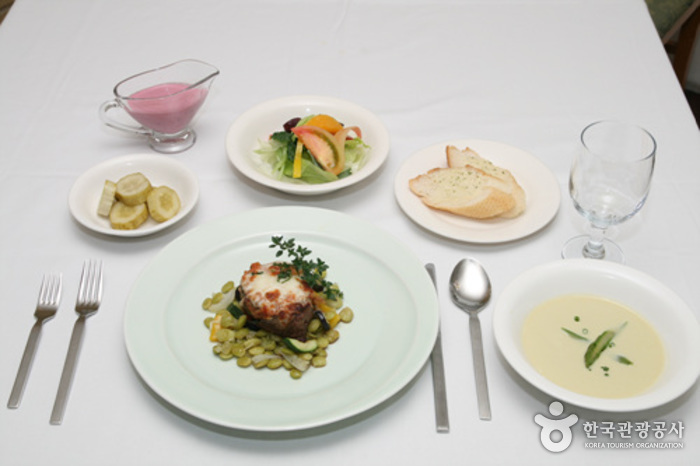
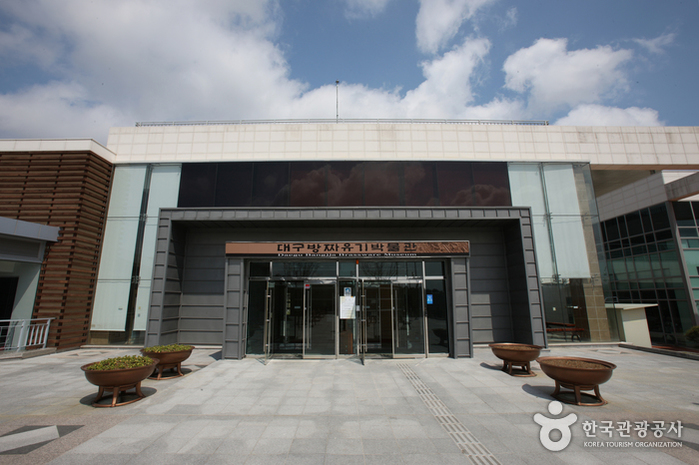
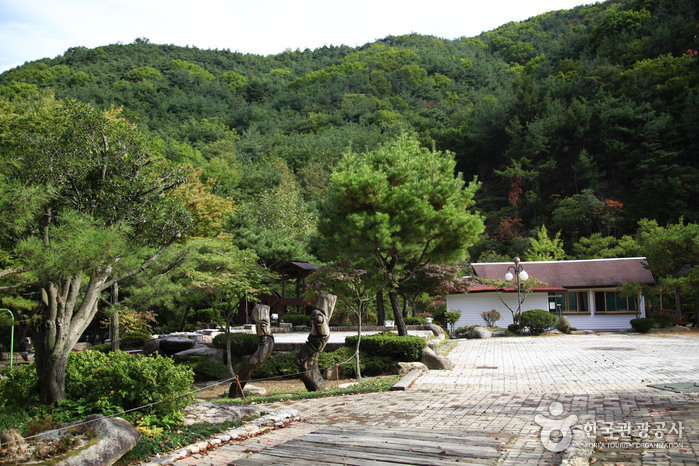
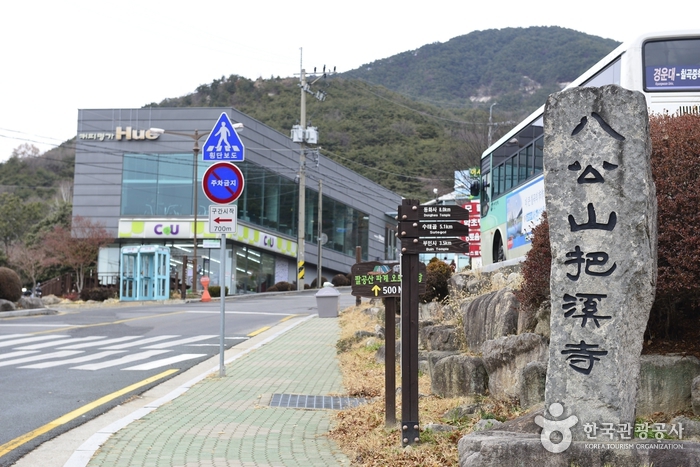
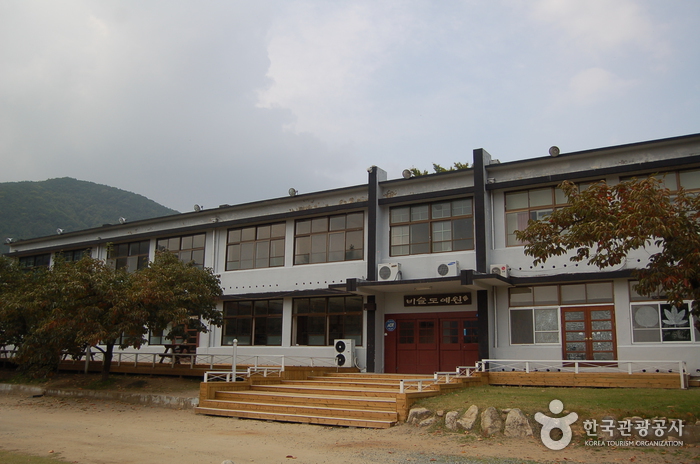
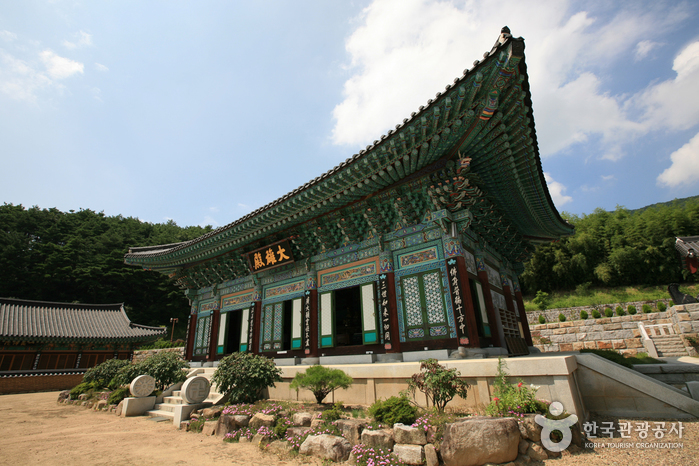
 English
English
 한국어
한국어 日本語
日本語 中文(简体)
中文(简体) Deutsch
Deutsch Français
Français Español
Español Русский
Русский